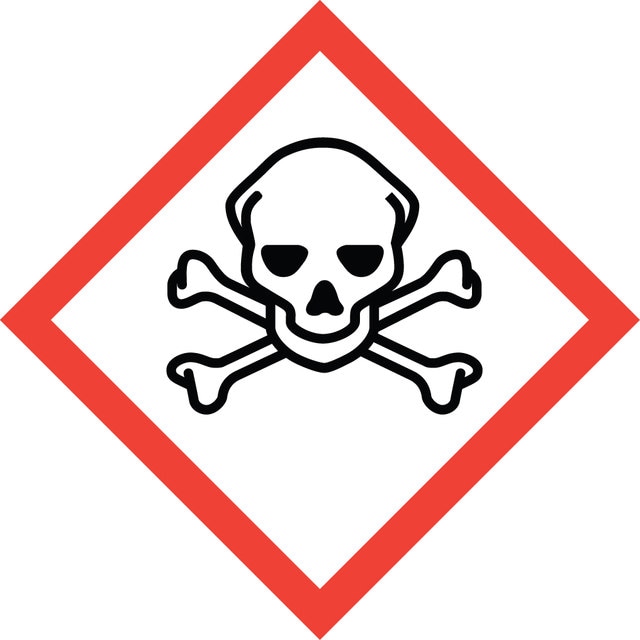442515
Chloroacetic acid
analytical standard
Synonym(s):
Monochloroacetic acid
Select a Size
About This Item
grade
analytical standard
vapor density
3.26 (vs air)
vapor pressure
0.75 mmHg ( 20 °C)
packaging
ampule of 1000 mg
technique(s)
HPLC: suitable
gas chromatography (GC): suitable
bp
189 °C (lit.)
mp
60-63 °C (lit.)
application(s)
agriculture
environmental
format
neat
storage temp.
room temp
SMILES string
OC(=O)CCl
InChI
1S/C2H3ClO2/c3-1-2(4)5/h1H2,(H,4,5)
InChI key
FOCAUTSVDIKZOP-UHFFFAOYSA-N
Looking for similar products? Visit Product Comparison Guide
Application
Signal Word
Danger
Hazard Statements
Precautionary Statements
Hazard Classifications
Acute Tox. 3 Dermal - Acute Tox. 3 Inhalation - Acute Tox. 3 Oral - Aquatic Acute 1 - Eye Dam. 1 - Skin Corr. 1B - STOT SE 3
Target Organs
Respiratory system
Storage Class Code
6.1A - Combustible acute toxic Cat. 1 and 2 / very toxic hazardous materials
WGK
WGK 3
Flash Point(F)
258.8 °F - closed cup
Flash Point(C)
126 °C - closed cup
Personal Protective Equipment
Regulatory Information
Choose from one of the most recent versions:
Already Own This Product?
Find documentation for the products that you have recently purchased in the Document Library.
Our team of scientists has experience in all areas of research including Life Science, Material Science, Chemical Synthesis, Chromatography, Analytical and many others.
Contact Technical Service

